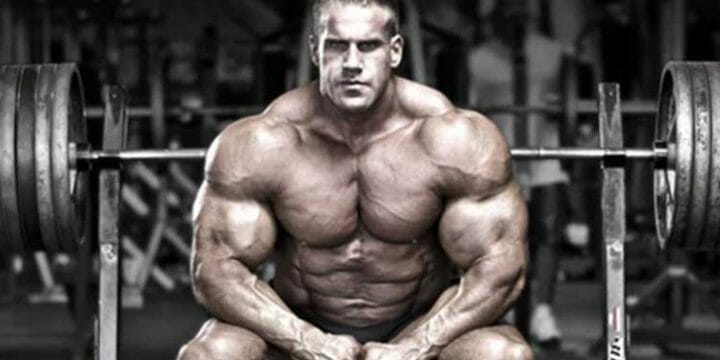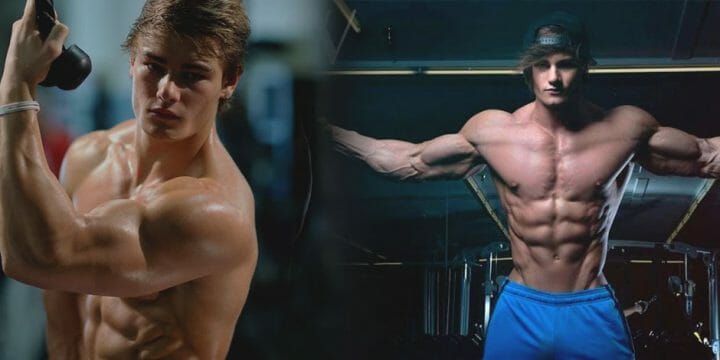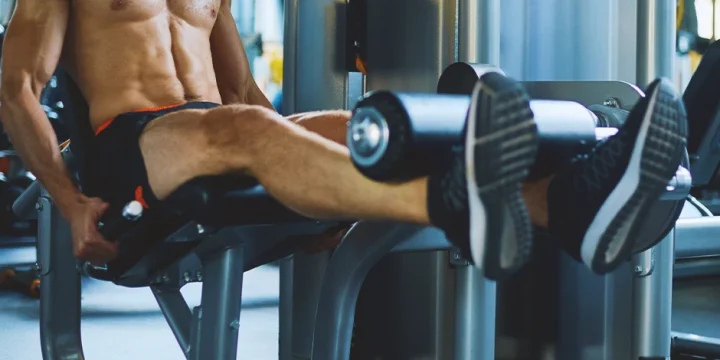Jeff Nippard is a fitness expert and influencer who takes a strong scientific approach to exercise.
His research-based videos on working out have garnered him a strong following on YouTube, where he delves into the exercise science of different lifts.
As a trainer looking to find better ways to help clients reach their fitness goals, I spent a month looking through Nippard’s videos and found his push workout unique and interesting.
Here's everything I found.
Jeff Nippard Stats and Fitness Journey
Based on online research, Jeff Nippard, a Canadian bodybuilder, powerlifter, and YouTuber, is known for creating educational content on strength training and powerlifting. He shares this content through his YouTube channel, which has garnered over 1.5 million subscribers.
At 19, Jeff participated in his first bodybuilding competition and earned the title of Mr. Junior Canada in 2012, showcasing his skills in bodybuilding.
Before delving into the specifics of the push workouts that have contributed to his impressive physique, let's first examine his stats.
-
Age: 33
-
Height: 5 feet, 5 inches (165 cm)
-
Weight: 178.5 lbs. (81 kg)
-
Chest: 44 inches
-
Waist: 32 inches
Jeff Nippard Push Workout Routine

Jeff Nippard's push workout targets the triceps, chest, and shoulders with a variety of exercises. He has four push workout variations detailed on his YouTube channel, with the first two focusing on the bench press and the remaining two on the overhead press.
Now, let's delve into the details of Jeff Nippard's ultimate push workout.
Variation #1: Bench Press | Powerbuilding
This push workout focuses on compound lifts, starting with a high-weight, low-volume bench press for powerlifting, followed by hypertrophy work.
Nippard recommends:
- Barbell bench press: 4 sets x 4–6 reps
- 60-degree incline cable fly: 3 sets x 12–15 reps
- Standing dumbbell press or Arnold press: 4 sets x 10–12 reps
- Egyptian lateral raise: 4 sets x 10–12 reps
- Tricep pushdowns: 4 sets x 10–12 reps
- One-arm overhead cable rope extension: 4 sets x 12–15 reps
- Flat dumbbell press static hold: 2 sets x 60 seconds (using a weight that’s 40% of your 5-rep max in the dumbbell press)
“I attribute a lot of my overall chest development to working up to a 370-pound paused bench press at a 160-pound body weight as an all-time PR.”
- Jeff Nippard, Fitness Expert
Related: Powerbuilding Workout
Variation #2: Bench Press | Hypertrophy
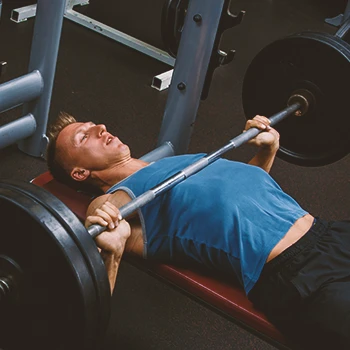
Here, he targets mid-level weights and an 8–12 rep range, occasionally exceeding 12 reps.
Exercises for this routine include:
- Bench press: 3 sets x 8 reps
- Machine overhead press or Arnold press: 3 sets x 12 reps
- V-bar dips: 3 sets of 12–15 reps
- Skull crushers: 3 sets x 10–12 reps (with a 3-second count when lowering)
- Egyptian lateral raise: 3 sets x 12 reps (breathing every 4 reps)
- Cable tricep kickback: 3 sets x 20–30 reps
Related: Best Hypertrophy Program (Goal, Principles and Tips)
“For a hypertrophy week, I like to use machines because you can train closer to failure without the exercises being too taxing.”
- Jeff Nippard
Variation #3: Overhead Press | Powerbuilding
Nippard’s next variation combines the overhead press (as a powerlift exercise) with hypertrophy-focused moves.
Here's the routine:
- Barbell overhead press: 4 sets x 4 reps
- Medium grip bench press: 3 sets x 10 reps
- Cable crossover: 3 sets x 10–12 reps
- Cable overhead triceps extensions: 3 sets x 10–12 reps
- Standing dumbbell lateral raise: 3 sets x 21 reps
- Neck flexion: 3 sets x 10–12 reps
“I think this [triceps extensions] is a good variation to include because the long head of the triceps crosses both the elbow joint and the shoulder joint. So varying the shoulder position can impact which region of the triceps you're emphasizing.”
- Jeff Nippard
Variation #4: Overhead Press | Hypertrophy
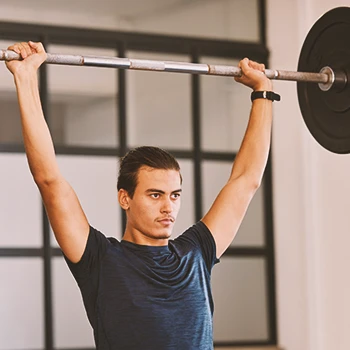
This Nippard push workout variation focuses on shoulder exercises for maximum hypertrophy. The inclusion of a close-grip bench press adds variety to the routine.
This variation includes:
- Barbell overhead press: 4 sets x 6–8 reps
- Close-grip bench press: 3 sets x 10–12 reps
- Incline dumbbell flys: 3 sets x 10–12 reps
- Cable rope upright row: 3 sets x 12–15 reps
- Standing lateral band raise: 3 sets x 12–15 reps
- One-arm cable overhead extension: 4 sets x 12–15 reps
- Medicine ball push-ups: 2 sets x AMRAP (as many reps as possible)
His Training Principles

Jeff Nippard follows four fundamental training principles for most exercises:
- Perfect Form: Emphasizing ideal form, Nippard particularly focuses on executing exercises with precision, especially in various bench press variations.
- Push-Pull-Legs Splits: He adheres to a push-pull-legs routine, strategically avoiding muscle overlap for effective training.
- Progressive Overload: Nippard recommends progressively increasing exercise volume, especially in compound movements, to optimize muscle gains over time.
- Eccentric Focus: Nippard suggests concentrating on the eccentric phase to promote long-term muscular growth and strength development, as supported by research from the National Institute of Health [1].
Related articles:
Jeff Nippard Diet Plan

Jeff Nippard's diet plan adjusts based on whether he's bulking or cutting. In both phases, he prioritizes protein and fat-rich foods, fruits and vegetables, low carbs, and protein powder.
During bulking, Nippard consumes five substantial meals, including items like:
- Breakfast: 3 whole eggs, 2 slices of turkey bacon, tater tots, whole-wheat bread, kiwi, and 8 oz. orange juice.
- Lunch: Chicken breast, mashed potatoes with gravy, sweet corn, baby carrots, and macaroni and cheese.
- Snack: Whey protein shake, 120 grams of banana, and 28 grams of pistachios.
- Snack: 3 oz. turkey breast, sweet kale salad kit, and half a cup of raspberries.
- Dinner: 6 oz. grilled salmon, roasted potatoes and carrots, sweet corn, black beans, and edamame.
On the cutting diet, Nippard follows five macro-focused meals, featuring:
- Breakfast: 12 oz fruit juice, multigrain muffin, organic strawberry fruit spread, 2 eggs, 1 egg white, chicken sausage link, and kiwi.
- Lunch: 3 oz. turkey, honey wheat bread, low-fat mayonnaise, lightly-seasoned Asian medley, shredded cheddar cheese, and 12 oz. orange juice.
- Snack: Whey protein shake with 120 grams of banana.
- Snack: Whey protein shake.
- Dinner: 130 grams ground turkey, 2 tbsp light sour cream, peach, 125 grams brown rice, and 28 grams shredded cheddar cheese.
As a fitness trainer, I think Nippard's organized approach helps him eat right for his fitness goals, whether he's trying to build muscle or lose fat.
His Diet Principles

Jeff Nippard maximizes gains by closely monitoring protein, fat, and carbs in a balanced diet, including 2–3 daily servings of fruits and vegetables.
Moreover, during cutting, he carefully manages calorie intake to preserve muscle mass and increases caloric intake with wholesome foods during bulking.
Finally, he underscores the importance of integrating science-backed supplements into his dietary approach.
Jeff Nippard Supplements

Jeff Nippard incorporates several supplements into his routine, including whey protein, caffeine, citrulline malate, multivitamins, and creatine. Although specific quantities haven't been disclosed, his videos suggest their regular use.
Reasons for Nippard's Supplement Choices:
- Protein Powder: Aids in meeting daily protein targets between meals.
- Caffeine: Boosts power output and training volume during intense exercises.
- Citrulline Malate: Reduces muscle soreness and promotes muscle pump post-exercise, according to WebMD [2].
- Multivitamins: Fill nutrient gaps from whole foods, particularly beneficial during caloric deficits.
- Creatine: Taken to enhance exercise performance in the gym.
References:
- https://pubmed.ncbi.nlm.nih.gov/18981046/
- https://www.webmd.com/diet/health-benefits-citrulline
About The Author
You May Also Like
